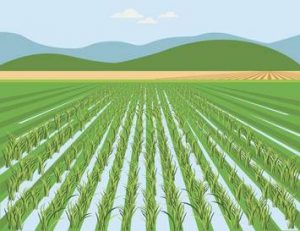Global Agricultural Productivity Report (GAP Report):

According to a new report, Global agricultural productivity is not growing as fast as the demand for food, amid the impact of climate change.
- The report was released in conjunction with the World Food Prize Foundation’s annual conference.
Findings of the Report:
- Total Factor Productivity (TFP) is growing at an annual rate of 1.36% (2020-2019).
- This is below the Global Agricultural Productivity Index that has set an annual target of 1.73% growth to sustainably meet the needs of consumers for food and bioenergy in 2050.
Factors Responsible for Low TFP Growth:
- TFP growth is influenced by climate change, weather events, changes in fiscal policy, market conditions, investments in infrastructure and agricultural research and development.
Situation in Different Regions:
- Drier Regions (Africa and Latin America): Climate change has slowed productivity growth by as much as 34%.
- High-Income Countries (in North America and Europe): Modest TFP growth.
- Middle Income Countries (India, China, Brazil and erstwhile Soviet republics): Strong TFP growth rates.
- Low-Income Countries (Sub-Saharan Africa): TFP is contracting by an average of 0.31% per year.
Significance of Productivity Growth:
- Destruction of Forest Areas: 36% of the world’s land is used for agriculture. Forests and biodiverse areas will be destroyed for planting or pasture.
- Diet-Related Diseases: USD 2T in economic losses and 4 million deaths are attributed to diet-related diseases each year.
- Soil Degradation: 90% of the earth’s soils could be degraded by erosion by 2050.
- Methane Emissions: 37% of methane emissions from humans influenced activity come from cattle and other ruminants.
- Loss of Irrigation Water: 40% of irrigation water is lost due to inefficient irrigation.
- Water sources will be depleted, making prime agricultural land unusable.




